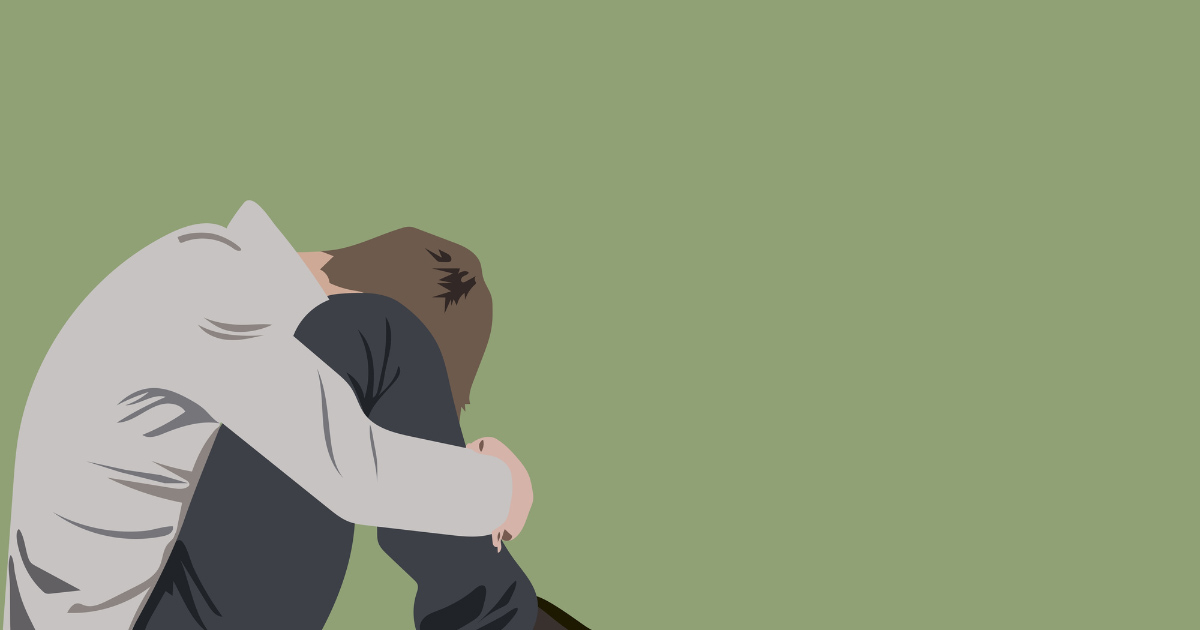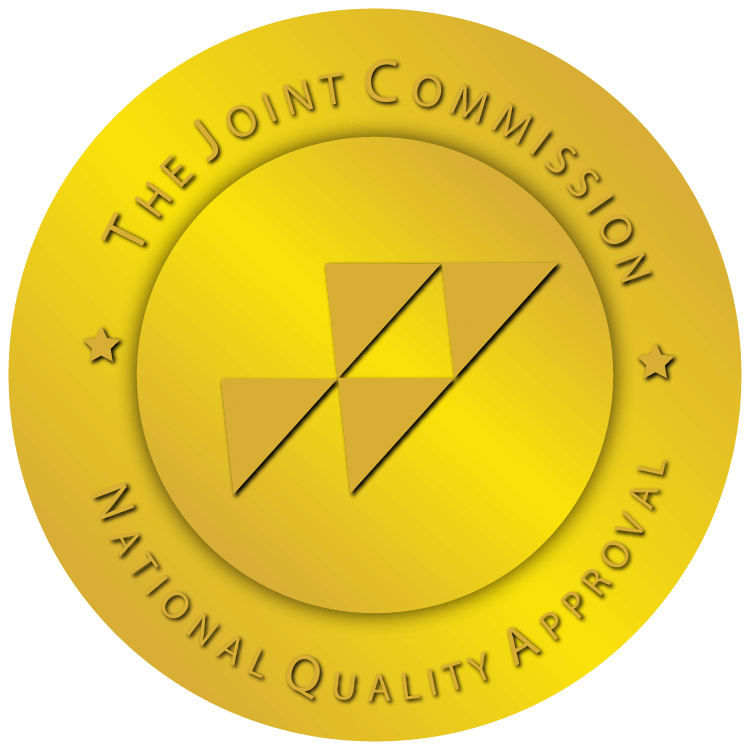
Mental health struggles are frequently challenging to handle alone, and many individuals who try to self-medicate in an effort to numb their pain. Self-medication with alcohol, drugs, or self-harm can quickly lead to a cycle of bipolar disorder or depression and substance use. Learn more about how these conditions can overlap and what to expect if you or a loved one is experiencing co-occurring disorders.
Understanding the Overlap
Co-occurring mental health disorders in the substance use disorder community – otherwise known as a “dual diagnosis” – are a mental health condition and a substance use disorder (SUD) occurring at the same time. This is, unfortunately, not uncommon, and both conditions can have a significant impact on one another. Both disorders must be addressed so that healing can truly begin.
What Is Cyclical Depression (and How Does It Relate to Bipolar Disorder)?

While the common definition of depression refers to simply feeling hopeless, tired, and uninterested in activities once enjoyed, there are many kinds of depression that may have differing origins. Cyclical depression involves cycles where the individual experiences symptoms of depression intermixed with bursts of hypomania, or an improved mood accompanied by elevated energy and an increased desire for activity.
The Cycles of Depression
When a person goes through a period of cyclical depression, they typically experience sadness, irritability, fatigue, and a loss of interest in activities or being around others. Additionally, they may have difficulty falling asleep or staying asleep, lose their appetite or have an increased appetite, or have trouble focusing on simple tasks. These symptoms last for an unspecified period of time and generally become more severe before receding.
After depression recedes, the individual experiencing cyclical depression may experience a time of hypomania. During this period, they may feel a surge of energy, increased confidence, and more motivation to participate in activities. Individuals in a hypomanic state are likely more willing to take risks and be more social with others.
Eventually, cyclical depression returns, and the cycle continues again and again. Because the individual does not feel consistently sad and hopeless, they may not believe they are suffering from depression.
Symptoms of Cyclical Depression
It can be challenging to determine whether a person has cyclical depression since the symptoms are not consistent. For example, while depression is experienced constantly, cyclical depression is experienced in intervals.
Common symptoms that signify the depressive cycle or cyclical depression include periods of:
- Anger
- Anxiety
- Lower sex drive
- Long periods of sleep
- Significant changes in weight
- Thoughts of suicide
Recognizing these symptoms and their frequency is crucial for seeking the appropriate treatment.
Cyclothymia
Cyclothymia is similar to cyclical depression and is commonly diagnosed as a type of cyclical depressive disorder. It is characterized by consistent shifts in mood, although they are typically not as severe as those associated with cyclical depression. Individuals with this disorder experience changes in mood many times during the year, have outbursts in which the person has trouble regulating their emotions, experience times of depression, or have elevated levels of anxiety.
Because the symptoms generally are not as intense as those of depression or bipolar disorder, this condition is diagnosed much less frequently. Cyclothymia is also considered somewhat easier to manage than bipolar disorder. With the right kind of therapy and/or medication, the individual can pursue a relatively normal life. A bipolar diagnosis, however, is more complicated and usually requires significant assistance from a mental healthcare provider.
Bipolar Disorder
Like cyclical depression, bipolar disorder also involves periods where shifts in mood are experienced. Individuals experience significant feelings of sadness and hopelessness that can lead to severe bouts of depression, followed by manic periods characterized by high energy and feelings of joy. Both depressive and manic periods are much more extreme than with cyclical depression, with potentially shattering lows and dangerous highs that may lead to excessive risk-taking and energy.
Bipolar II symptoms are also defined as periods of extreme highs and lows. However, even though the person experiences these extreme mood shifts, they do not suffer from manic episodes. Instead, they have hypomanic episodes, which are not as extreme as manic episodes. Those with bipolar II feel depressed more often than they feel elevated feelings of happiness, but the condition is characterized by at least one episode of hypomania during their lifetime.
A person experiencing cyclical depression symptoms may indicate that they are suffering from bipolar II, cyclothymia, or mood instability. No matter what their mental health diagnosis may be, it can still have a resounding impact on substance use disorder..
Why Bipolar and Depression Fuel Addiction
As outlined by the American Psychiatric Association, mania can be determined by a person’s excessive involvement in pleasurable activities that have a high potential for negative consequences (American Psychiatric Association, 2000). Becoming impulsive is a key component of mania, as the person tries to find new ways to experience a feeling similar to being intoxicated. In this way, bipolar and addiction can go hand in hand.
Coping with Hypomania by Using Substances
Mania and hypomania can also result in psychotic episodes, such as delusions or hallucinations (Dailey, 2023). Along with these episodes may come grandiose delusions, where individuals believe they are highly qualified to carry out certain tasks, are skilled in careers for which they have no experience, or believe they are invincible and able to perform dangerous stunts.
Other aspects of hypomania can include impulsivity, risky behavior, and substance use, which typically increase as the manic episodes develop.
Coping with Depression by Using Substances
Depression, on the other hand, causes an individual to draw within themselves. This can often result in isolation, feeling stuck, and hopelessness. Oftentimes, individuals turn to substance use as a way to cope or to escape from the reality of life’s circumstances.
Experiencing shifts in mood is often both mentally and physically exhausting. As a result, substance use can become both an unhealthy coping mechanism and a way to try to feel “normal.”
The Risk of Misdiagnosis or Missed Diagnosis
According to research cited in the Journal of Affective Disorders, more than one-third of people with bipolar disorder wait ten years to receive an accurate diagnosis (Lish, 1994). While this is an older study, there has been no recent research to disprove these findings. Additionally, many people who suffer from this disorder aren’t diagnosed with bipolar depression or substance abuse until long after an addiction begins.
The Importance of Diagnosing a Co-Occurring Disorder
If someone seeks treatment for a substance use disorder without also addressing the mental health struggles that may be at the root of substance use, recovery is elusive if not unlikely. It is also essential to recognize the underlying mental health patterns that increase the risk of relapse. Only with attention to both conditions simultaneously can people address the cycle of depression and substance use disorder and prevent it from continuing in relapse.
The Difficulty of Correctly Diagnosing Addiction and Mental Health Disorders
Missed or inaccurate diagnoses can be common in cases of co-occurring disorders. It may be difficult to determine which began first, as a mental health disorder could lead to a reliance on substances. Addiction with mental health symptoms can also mean substance use can worsen or mask symptoms of depression and anxiety.
Why Addiction Treatment Must Address Mental Health

True co-occurring disorders rehab requires evidence-based treatment that considers and addresses the impact of mental health on substance use. A thorough understanding of both disorders can help providers develop an integrated approach that assists in the recovery process. It is essential that substance use disorder treatment treats not only substance use but also mental health, since the two issues are often linked.
The Holistic Approach to Co-Occurring Disorders
Maryland Recovery features addiction treatment programs that also address the symptoms and root cause of any co-occurring disorders, enabling clients to break the cycle of substance use and mental health struggles. This is accomplished with a holistic approach that treats all areas of the person, including the mind, body, and spirit. People experiencing this approach are more equipped to identify triggers and prevent relapses.
Rather than remaining in the traditional loop of detox and treatment, holistic addiction recovery in Maryland addresses all areas that are intertwined with substance use disorder. This involves the mental, physical, emotional, and even spiritual aspects of mental health.
What Holistic Therapy Looks Like for Co-Occurring Disorders
Strategies for treating substance use disorders and mental health conditions simultaneously can involve individual, group, and family therapies that offer structure and provide continual support. It is crucial, however, to recognize that therapy for co-occurring disorders is never a one-size-fits-all approach. Holistic addiction recovery involves careful selection of therapeutic options to meet the person’s unique needs.
Prioritizing mental health is essential as part of this treatment. Without it, true healing cannot take place. Dual diagnosis clients need an environment that focuses on both disorders and the management of their symptoms without requiring hospitalization.
The Result of Treating the Whole Person
Treating the whole person involves providing trauma-informed care that considers all aspects of the root causes of SUD as well as an introduction to the healthy lifestyle practices critical for lasting recovery. Identifying and treating the origin of mental health and substance disorders is the key to finding and maintaining true recovery.
Those who have undergone holistic treatment have discovered the motivation, support, and tools needed to pursue their recovery journey. Wholeness and healing can be achieved when restoration of the body and mind has taken place.
Maryland Recovery’s Dual Diagnosis Program
For over 20 years, Maryland Recovery has championed the ability of holistic rehabilitation to transform the lives of our clients. We offer a dual diagnosis program that can be the key to long-term recovery. If you need dual diagnosis treatment in Maryland, our range of therapy options can offer a personalized treatment solution that can work for you. .
We address SUD and mental health disorders with:
- Structure and consistency
- Individual and group therapy sessions
- Support that extends after the detox period
- Personalized, trauma-informed care
Our holistic programs feature numerous therapies designed to identify and treat the behavioral and social needs of clients in recovery. Clients can participate in a variety of therapeutic activities, including acupuncture, yoga, meditation, and art therapy.
Don’t let the cost of treatment prevent you from receiving the care that you need. We offer affordable and insurance-friendly programs, with sponsorship options also available.
Help Is Here

Substance use disorders and mental health issues should not be handled alone. If you or a loved one is stuck in the cycles of depression and addiction or has experienced a relapse, there is still hope. Maryland Recovery provides the dual diagnosis treatment you need to find recovery.
Receiving a diagnosis is not required for admission. Please contact Maryland Recovery now for a consultation or to request help.
*Editor’s Note: This article was originally published May 16, 2022 and has been updated October 10, 2025.
Sources:
- Koob, G. F., & Le Moal, M. (2008). Addiction and the brain antireward system. Annual Review of Psychology, 59, 29–53. https://www.ncbi.nlm.nih.gov/pmc/articles/PMC5414580/#R5
- Streltzer, J., & Nguyen, L. (2018). Psychological factors affecting medical conditions. In D. W. Kasper et al. (Eds.), Psychiatry (StatPearls). StatPearls Publishing.https://www.ncbi.nlm.nih.gov/books/NBK493168/
- Sinha, R. (2008). Chronic stress, drug use, and vulnerability to addiction. Annals of the New York Academy of Sciences, 1141(1), 105–130. https://www.ncbi.nlm.nih.gov/pmc/articles/PMC2626636/
- National Institute of Mental Health. (n.d.). Bipolar disorder. Retrieved March 27, 2025, from https://www.nimh.nih.gov/health/topics/bipolar-disorder
- Brady, K. T., & Lydiard, R. B. (1995). Comorbidity of psychiatric disorders and posttraumatic stress disorder. The Journal of Clinical Psychiatry, 56(Suppl 1), 22–26. https://pubmed.ncbi.nlm.nih.gov/7989643/
- Sinha, R. (2008). Chronic stress, drug use, and vulnerability to addiction. Annals of the New York Academy of Sciences, 1141(1), 105–130. https://www.ncbi.nlm.nih.gov/pmc/articles/PMC2626636/#R14
- National Institute of Mental Health. (n.d.). Bipolar disorder. Retrieved March 27, 2025, from https://www.nimh.nih.gov/health/topics/bipolar-disorder#:~:text=People%20with%20bipolar%20disorder%20often%20experience%20periods…

A solution focused therapist with over a decade in the helping services, I am attuned to the broad expanse of holistic recovery. My mission is inspired by the work of Joseph Campbell, Dr. Wayne Dyer, and Fr. Joseph Martin. I am well versed in the specific needs of the recovery community and am trained in EMDR.








